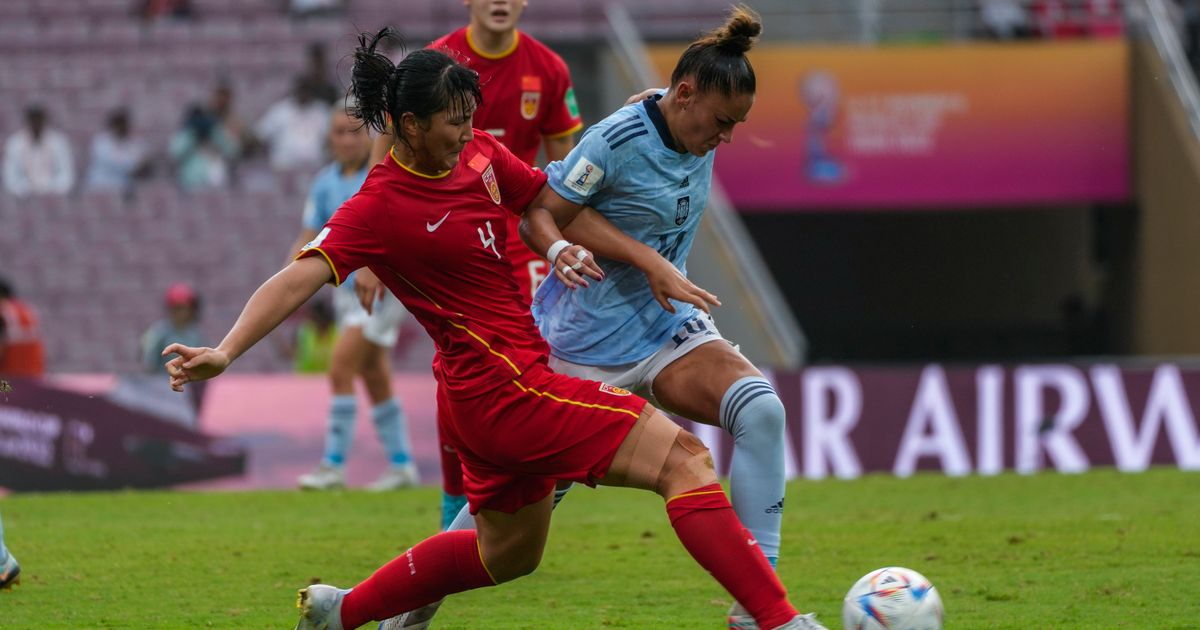
When China’s qualification campaign for the men’s World Cup ended in February with a humiliating loss to Vietnam, coach Li Xiaopeng apologized to angry fans and promised that “Chinese soccer will definitely revive in the future, but it needs hard work, generation by generation.”
The revival is being led by the country’s women, who are very much the short and medium-term focus of the Chinese Football Association.
China was drawn with England and Denmark in Group D of the 2023 Women’s World Cup at a ceremony in Auckland, New Zealand last weekend. Just 48 hours later, China’s State General Administration of Sport, Ministry of Education, Ministry of Finance and the CFA announced a reform and development plan for women’s soccer until 2035.
By 2025, the plan stated that the objective is to have a 50-team league structure and 30 youth training centers to “improve the environment and atmosphere for the development of women’s soccer, and consolidate the foundation for its development.”
The Chinese team competing in the under-17 women’s World Cup in India opened with a 2-1 win over Mexico but didn’t make it out of the group following losses to Colombia and Spain.
But if all goes according to the new plan, by 2035 China will have hosted and won the women’s World Cup and soccer will be a widely popular participation sport for women and girls.
Next year’s World Cup, co-hosted by Australia and New Zealand, will give the plan’s architects an idea of the current level of the Chinese team. The objective is to reach the quarterfinals, or last eight, in the 32-team tournament.
The Asian champions have games against England and Denmark and the four-team group will be completed next February by the winner of a playoff series involving Senegal, Haiti and Chile.
“There are two European teams in our group, they are stronger than my team,” coach Shui Qingxia said. “What an unfortunate coincidence that we were drawn into the same group with them.
“I think Denmark is quite strong and England is European champion so that will be very tough and we have to do our best to get ready.”
Compared with the men, who lost all three games in 2002 in their only appearance to date at the World Cup, the women have had success in the past. The Chinese women’s team reached the final of the 1999 World Cup, losing on penalties to host nation United States, and have nine Asian titles — although seven of those were between 1986 and ’99.
The Steel Roses have faded a little since then and have failed to progress past the quarterfinals at the World Cup. The team finished bottom of its group at the 2020 Olympics with one point from three games.
In Asia, China has been challenged by the arrival of Australia into the Asian Football Confederation in 2006, and the rise of Japan, which won the women’s 2011 World Cup.
February’s dramatic Asian Cup final win over South Korea, when China rallied from 2-0 down to win 3-2, was hailed around the country as a return to glory.
“If faith has a color, it must be China red!” The Chinese Football Association said, adding that the team was “the pride of China.”
That is the hope for next decade, with China’s struggling men’s teams likely to take a backseat while the women’s teams prepare to drive forward to take on the world with the support of the country behind them.
___
AP World Cup coverage: https://apnews.com/hub/world-cup and https://twitter.com/AP_Sports